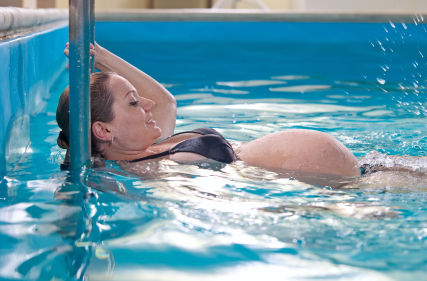Water and your Pelvic Floor
Written by:
Dianne Edmonds Posted on 21 Aug 2015

Your progressions of exercise during and after pregnancy depend on the level of your pelvic floor and core control, just like when you exercise out of the water.
What many women don't realise is that when they push down in the water, for example with a kickboard, or noodle during classes or individual training, pressure is still generated within the abdominal muscle wall, and if their pelvic floor or abdominal wall is weakened from pregnancy hormones, or from previously giving birth, then there can be pressure put upon those areas.
Most of the Pelvic Floor First 10 Step Guide to Pelvic Floor Safe Exercises still stand firm even when you are exercising in the water. "Heavy lifting" in the water means pushing against any resistance that causes you to hold your breath, or that puts pressure down upon your pelvic floor muscles or on your abdominal wall causing it to bulge (especially important if you have an abdominal muscle separation during pregnancy, or in the early postnatal months).
In the water, sometimes standing with your legs apart and leaning forwards can give you a good "feel" to your pelvic floor muscle exercises, but when using resistance equipment you can keep your feet closer together to protect your pelvic floor.
Remember to rest between sets of exercises and to strengthen gradually, matching your pelvic floor fitness with that of your body, as this allows you to regain your pelvic floor fitness more safely.
 Proudly supporting Pelvic Floor First as a campaign Ambassador
Proudly supporting Pelvic Floor First as a campaign Ambassador
